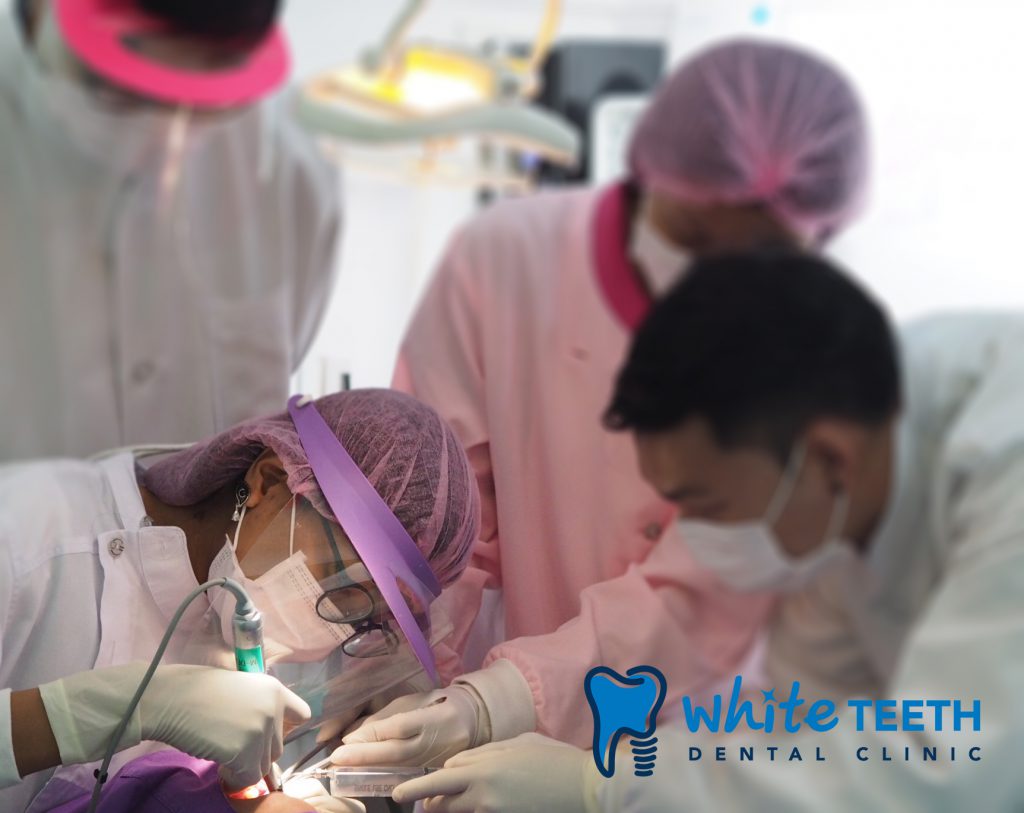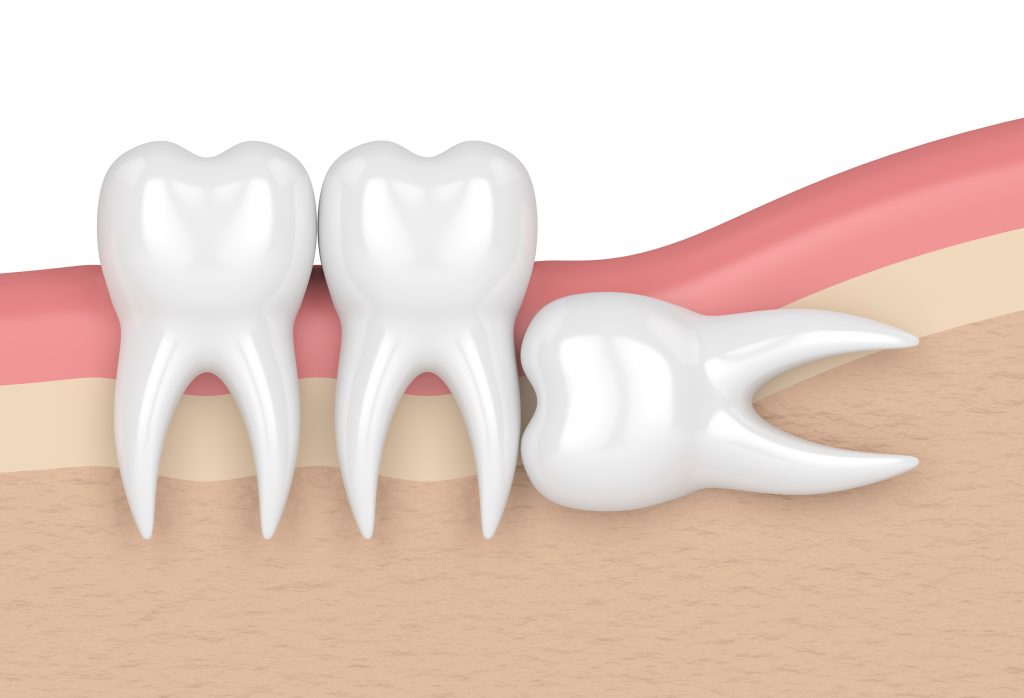Oral Surgery (Extraction, Wisdom teeth removal)

Oral surgery
Oral surgery basically involves any dental surgical treatments. Dental consultation, proper diagnoses and treatment plan with our dental specialists will first be required before oral surgery takes place. Oral surgery treatments include :
- Wisdom Teeth
- Extraction
- Bone graft surgery
Wisdom tooth, which are usually the last teeth to grow in — typically between the ages of 17 to 21 — are most typically impacted. By the time that wisdom teeth — also known as “third molars” — come in, the jaw has often stopped growing. The mouth and jaw may thus be too small to accommodate them. Because there’s no real need for wisdom tooth anymore, they’re typically removed if they’re a problem. If you have a small jaw, you’re more likely to have impacted wisdom teeth. The second most common teeth to be impacted are the maxillary canies, also referred to as the cuspid or upper eyeteeth. Because these teeth play a more important role in your mouth, your doctor is more likely to recommend treatments that encourage these teeth to erupt instead of removing them.
Symptoms of impacted teeth
You may not experience any symptoms in some cases. In other cases, an impacted tooth may cause:
- Pain gum
- red, swollen, or bleeding gums
- pain when opening your mouth, or when chewing and biting
Extraction
Pain management must be addressed. Various pain management techniques must be used including: medical management (pre-surgical and post-surgical medications), regional nerve blocks, and local nerve blocks.
- The top (coronal) 1/3 of the alveolar bone surrounding the tooth has 2/3rds of the holding power.
- Periodontal fibers are not designed to withstand slow, continuous torque.
- Multi-rooted teeth are transformed into single-rooted teeth.
- Gingival preservation is paramount.
- Complete extraction of root confirmed by radiograph.
- Closure of alveolus to maintain blood clot.

Procedure for Dental Extraction
- It is advisable to consult with your dentist for checking up.
- The doctor may prescribe some antibiotics that you may have to take prior to the extraction. An x-ray will be taken to determine the best way to extract the affected tooth.
- The doctor will ask your information such as, such as medical history, drug allergy history, food allergy, or if you have regular medication.
- Prepare the area where the tooth must be extracted, the dentist will inject to relieve pain during the treatment, then the dentist will extract the tooth.
- Dentists give advice on procedures and care for wounds caused by tooth extraction, including cleaning care.
What is the recovery period from a tooth extraction?
- It normally takes a few days to recover after a tooth extraction. The following steps help ensure that your recovery goes smoothly.
- Apply an ice pack to your cheek directly after the procedure to reduce swelling. Use the ice pack for 10 minutes each time.
- After the dentist places the gauze pad over the affected area, bite down to reduce bleeding and to aid in clot formation. Leave the gauze on for three to four hours, or until the pad is soaked with blood.
- Take any medications as prescribed, including over-the-counter painkillers.
- Rest and relax for the first 24 hours. Do not jump immediately into your regular routine the following day.
- Don’t use a straw for the first 24 hours.
- Don’t smoke.
- Don’t rinse for 24 hours after the tooth extraction, and spit only gently.
- Use pillows to prop your head up when you lie down.
- Brush and floss your teeth like normal, but avoid the extraction site.
- The day after the procedure, eat soft foods, such as yogurt, pudding, and applesauce.
- After 24 hours, add a half-teaspoon of salt to eight ounces of warm water to rinse out your mouth.
- As you heal over the next few days, you can slowly reintroduce other foods into your diet.
What is a bone graft ?
A bone graft is a surgical procedure used to fix problems with bones or joints.

Bone grafting, or transplanting of bone tissue, is beneficial in fixing bones that are damaged from trauma or problem joints. It’s also useful for growing bone around an implanted device, such as a total knee replacement where there is bone loss or a fracture. A bone graft may fill an area where bone is absent or help provide structural stability. The bone used in a bone graft can come from your body or a donor, or it can be entirely synthetic. It can provide a framework where new, living bone can grow if it’s accepted by the body.
